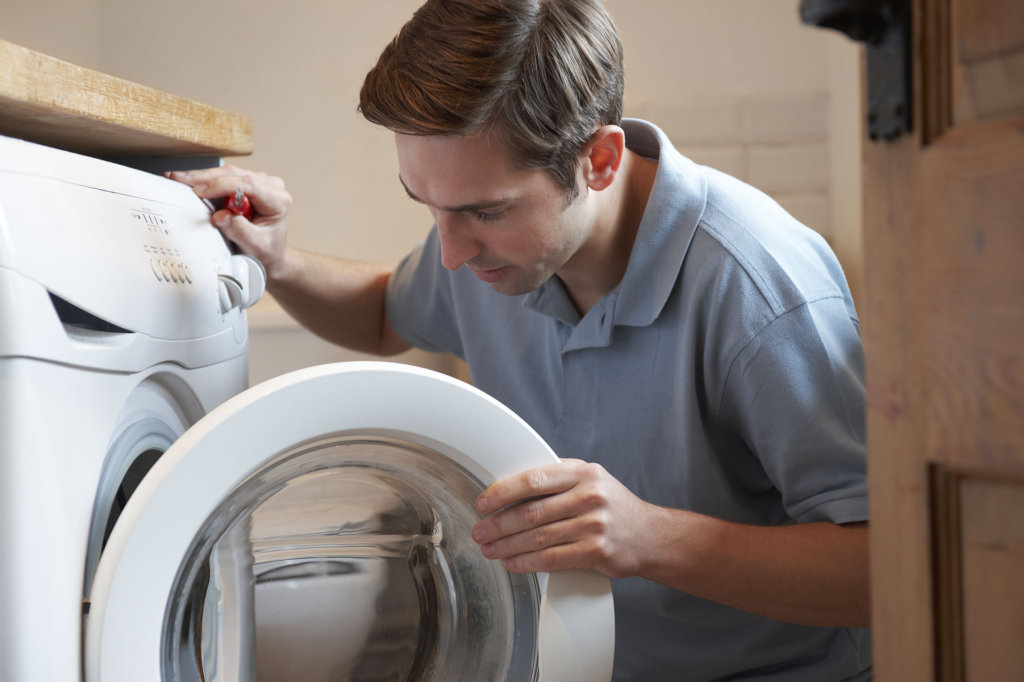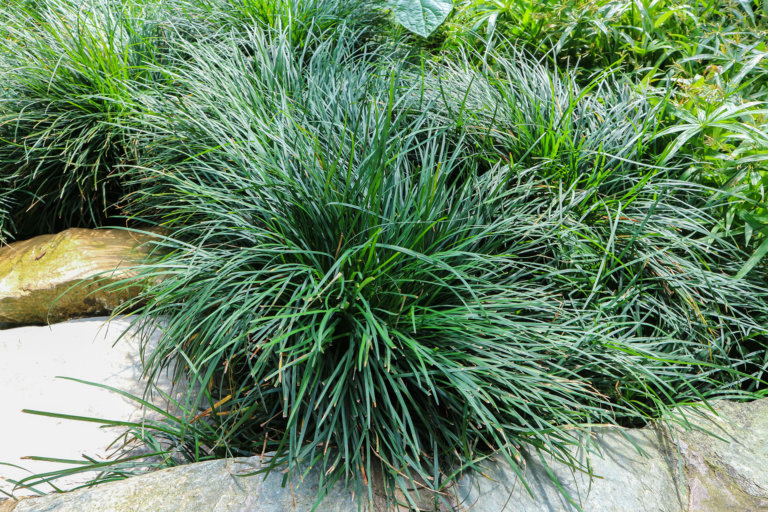Is your washing machine full of water and won’t drain?
The culprit, in most cases, is something lodged in the drain. Luckily, most homeowners are handy enough to clear the obstacle with the right tools and techniques.
To help you fix a washing machine that won’t drain, follow the steps in this guide. We’ll show you what to do before you start, and the best methods to get your washing machine draining again.
Paying for repairs is often unnecessary, so try these DIY techniques and save yourself both time and money!
Before You Start
Before you begin pulling your washing machine drain lines apart, there are some tricks to getting your washing machine to drain if it turns out not to be a clog.
Checking these first is smart and can save you time if it turns out they are the culprit.
LID SWITCH – A top-load machine will not drain if it thinks the door is open because the lid switch is not engaged. Locate the switch along the edge of your door and push it down. You should hear a click if it’s working or a light will illuminate on the display.
Close the lid again and make sure the tab is engaging the switch. If it is and the machine doesn’t automatically start draining, there is most likely a clog in the drain line.
If you don’t hear a click or no indicator lights up, the switch will need replacement.
HOSE KINK – The drain hose that runs from your washing machine can sometimes kink due to the machine moving. Inspect the hose for any bends or compression that would stop the water flow. Replace the line if you see any damage.
SENSOR RESET – For those with electronic washing machine controls, you can try to reset the sensors by unplugging the machine for a full minute, then plugging it back in.
If a basic reset fails to fix the issue, about half of all machines have a “master reset” trick. Unplug the washer and wait the full minute. Plug it back in, and immediately open and shut the washing machine door six times within 12 seconds. This action should reset the primary sensors.
Other machines have a reset button, which you can locate using your appliance manual.
Start a rinse or spin cycle and see if the water drains. If not, try the next step below.
How to Fix a Washing Machine That Won’t Drain
Clearing a blockage is the leading way to fix a non-draining washing machine, and these are the best steps to accomplish the task.
You will need the following supplies:
- Screwdriver
- Wrench
- Funnel
- Rags
- Baking soda or drain cleaner
- Drain snake
- Bucket
Step 1: Unplug the Washing Machine
WARNING: Electrocution is a very real risk when working on a washing machine. As when dealing with any appliance, the first and most critical step is to unplug the unit.
Find the cord and unplug it from the wall. If the plug is hidden behind the washer, you can shut off the main breaker to the circuit first, then wiggle the machine out enough to unplug it.
Water and electricity do not mix, and clearing a drain line can get you wet, so don’t bypass this critical step!
Step 2: Check the Trap
The trap is the first place a clog can form. The trap has a U-shape and is within the drain line piping.
If your trap is easily accessible, put a bucket or rags underneath and slowly unscrew the connections and pull it free.
Most plumbing connections are easy to tighten or untighten by hand, but use a wrench if it’s stubborn. Be careful to not use excessive force, which can crack the PVC material.
Look inside the trap for a visible blockage like a sock or built-up debris and pull it out. If you find a blockage here, clearing it out should resolve the issue.
Clean out the trap by rinsing it in water, then reattach firmly to the drain line. Clean up any water, plug the machine back in, and test out the rinse/spin cycle to see if the machine drains. If not, there could be another clog elsewhere.
Step 3: Clear the Drain (Part 1)
To clear a built-up linty blockage past the trap, you need to access the back of the machine and, using a screwdriver, free the drain hose.
You can use a mix of baking soda and boiling water or a commercial drain cleaner for this step.
Holding the drain line upright, insert a funnel into the end. Slowly and carefully pour the liquid into the line via the funnel. Stop pouring if the liquid reaches the top of the drain line.
Hold the pipe upright and wait for several minutes to allow the cleaner to work on the clog. Pour more hot water down the pipe and see if it continues to flow and not back up.
If you can pour a whole bucket of water through the line without it backing up, chances are the clog is free and you can reattach the hose to the machine, plug it in, and run the rinse/spin cycle to drain the water.
Step 4: Clear the Drain (Part 2)
To clear a wayward sock or small article of clothing out of your washing machine drain, you will need to utilize a drain snake.
Drain snakes have an attachment at the head that can grab onto objects and pull them free.
To use a snake, remove the trap from the drain line and insert the head into the open pipe below. Unwind or slide the snake into the pipe until you feel resistance.
Push or spin the snake gently back and forth for a bit, which will either snag the blockage onto the snake or free the clog, letting it wash down the pipe.
Slowly retract the drain snake and remove it from the pipe. Using the funnel and bucket, pour water into the pipe and check for drainage.
If water is flowing correctly, reattach the trap, stick the drain hose from the washing machine into the primary drain connection, plug in the washer, and run the rinse/spin cycle to drain the water from the tub.
If the drain still has a blockage, you need to bring in more power.
Step 5: Still Blocked? Upgrade the Snake
If your drain still doesn’t empty, the issue could be that your snake wasn’t long or powerful enough to reach and free the clog, or your main sewer line has a blockage.
A main sewer line blockage is rare if you don’t also have water backing up in other places in your home like the bathtub, toilet, or sinks.
Either way, it’s possible you need to try clearing the drain line from your washing machine with a more industrial snake machine (found at tool rental shops) that work by using the same Step 4 procedure.
These snakes are much longer and often offer different head options that can tear through clogs quickly.
If you still can’t get your drainpipe or washing machine to empty, there could be other more serious issues with either your machine or sewer line. At this point, it’s best to call in a plumber.







